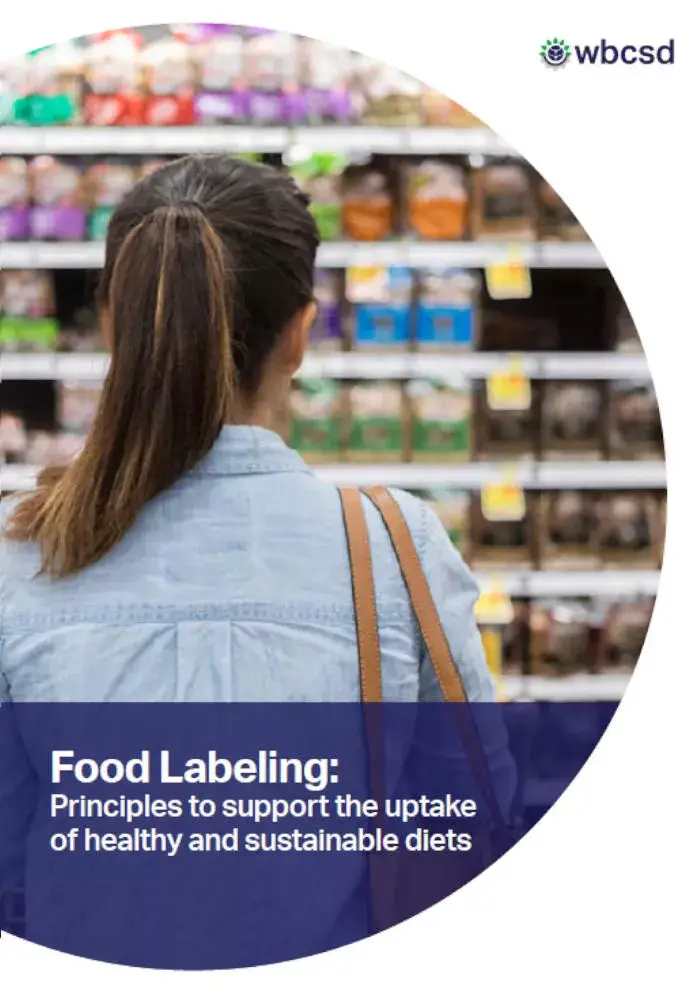Food Labeling

Published
03 November, 2021Type
PublicationTransforming food systems to support healthy people and a healthy planet is fundamental to long-term sustainability, including mitigating climate and biodiversity catastrophes while equitably nourishing a growing global population. Coaxing and driving food systems in a more sustainable direction will require countless interventions– most often simultaneously. While all food system stakeholders have important roles to play in this transition, food and agriculture companies – those that touch nearly all the food produced and consumed in the world – are critical to growing and manufacturing foods that nourish people and regenerate the planet. They also must use the power of their brands and marketing prowess to encourage people to choose the most nutritious and sustainable options.
WBCSD’s Food and Agriculture Roadmap serves as the implementation plan for the CEO Guide to Food System Transformation. The chapter on Healthy and Sustainable Diets highlights the urgent need to help consumers choose and access healthy and sustainable food. One key action area focuses on shaping consumer awareness and demand for healthy and sustainable food options through effective labeling and providing information about food products to consumers in an accessible and clear way.
Since we published the Healthy and Sustainable Diets chapter, the breadth and diversity of food labeling systems has multiplied around the world. With over 500 labels linked to the environment and nutrition on the market today, the proliferation of labeling has raised questions regarding how to navigate this landscape and what types of principles to consider moving forward to support the pragmatic and impactful application of labels for companies and consumers alike.
As a first step, FReSH members have identified the need to better understand when and how labels are most effective in supporting consumer behavior change towards healthy and sustainable diets, as well as the fundamental challenges associated with their implementation.
The report “Food Labeling: Principles to support the uptake of healthy and sustainable diets” includes a high-level assessment of existing nutrition and environmental impact labels, with a focus on the recent proliferation of scoring labels (e.g., traffic light systems), as well as the evidence to date on the factors that affect the efficacy and uptake of food labels. We propose a set of globally relevant principles that the agri-food industry believes should underpin effective nutrition and environmental impact labels (front-of-pack, on menus, and multi-channel) for food, with the ultimate goals of supporting consumer choice and industrial innovation to lessen the impacts of food on health and the environment. Building on the United Nations (UN) Guidelines for Providing Product Sustainability Information, we have tailored these principles to be relevant and applicable to the agri-food sector. These principles will feed into and inform ongoing discussions related to health and environmental impact labeling held by governments, UN agencies, civil society, the private sector and other stakeholders of the UN Food Systems Summit. The goal of this work is to help relevant stakeholders advance this topic collaboratively through the 2021 UN Food Systems Summit and beyond.
